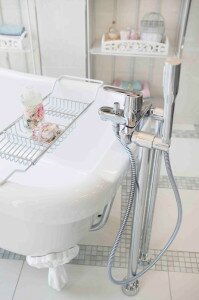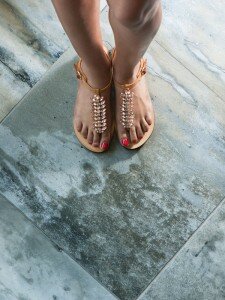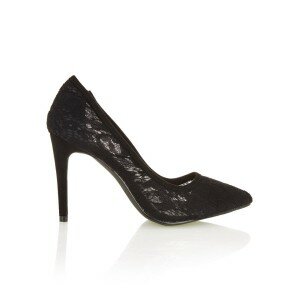-
Make your bathroom cosy this winter
25 June 2014
Whether you bath or shower early in the morning or just before going to bed, the bathroom can become a rather chilly place during the cold winter months.
‘There are two ways in which home owners can add some heat to this room where family members prepare for, and end their day,’ says Liza Watermeyer, Retail and Display Coordinator at Tile Africa.
Underfloor heating results in tiles that become warm underfoot and heated towel rails ensure cosy towels as soon as you’re ready to leave the comfort of the warm bath or shower.
The cost of heating is rising and therefore it’s good to note that the latest designs of both these heating options are becoming more energy efficient and are now fitted with timers so that the devices switch on and off when required.
‘Underfloor heating is best considered when the bathroom is undergoing a renovation as the heating pads are fitted underneath the tiles,’ says Watermeyer. This form of heating not only makes the tiles warm underfoot, but also raises the ambient temperature of the bathroom. Taking a bath or shower early in the morning or late in the evening becomes more pleasant when the room is warmer.
Underfloor heating systems that are programmable allow home owners to schedule the heating to switch on before they wake up in the morning and switch off when they leave home or go to bed. This makes the system both conventional and economical.
When planning to fit underfloor heating in your bathroom, consider placing the heating pads where you’ll be doing most of the standing in the bathroom, such as in front of the mirror and vanity, where you step out of the bath and shower or where you get dressed.Another heating option is a heated towel rail, available from R3 199, considered to be a luxury by many, but the latest models are cleverly designed to use less electricity. These rails are available in a wide range of styles, dry towels much quicker than the conventional way, offer gentle background heating, reduce the risk of damp and mould in the bathroom and also add value to a bathroom.Heated towel rails stocked by Tile Africa don’t consume a large amount of electricity, with most brands having developed solutions that use less electricity while maximising heating efficiently. The running cost of a heated towel rail is a little more than running one or two lamps (between 100 and 200 Watts).
The latest designs feature Dry Element Technology (DET) which results in direct intelligent heating. This means that the side bars are not heated, but rather the horizontal rails below the towels, thus saving electricity. This technology also allows for rapid heating – the rails reach their required temperature within 10 to 15 minutes from switching on the rail.
‘Select a model that allows for the temperature to be adjusted and that is fitted with a timer so that you can programme it to automatically come on only when needed,’ says Watermeyer.
Heated towel rails are either connected directly into the heating system or can be run independently using electricity. Dry Element Technology (DET) rails are easier to install because there are less parts to assemble and the units are lighter due to there being no fluid inside the towel rails. There is no welding required due to the patented method of construction and use of laser tube technology.
One of the latest heated towel rail designs curve at the top to offer a handy storage rack for towels while heating the towels that are hanging on the rack at the same time. ‘This design is ideal for small bathrooms as it offers additional storage space for towels,’ says Watermeyer.
Although bathroom heating is considered an investment due to it adding to the value of the home, it increases the electricity cost and is therefore still considered a luxury rather than a necessity.
Home owners who do have heating in the bathroom consider their bathrooms to be a comfortable place due to the pleasant ambient temperature of the room, especially during the cold winter months.
Tile Africa stocks a wide variety of on-trend heated towel rails that are both stylish and functional.
For more information contact Tile Africa on or visit www.tileafrica.co.za.


















